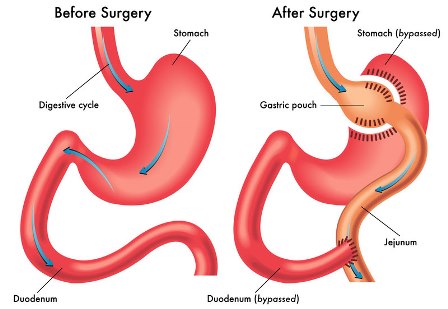Contact Us at 845.368.5285
Bariatric surgery may be suggested to patients with a high Body Mass Index (BMI) and other medical conditions related to obesity.
Bariatric surgery can be done using open surgery through a large incision (cut). It can also be done using minimally invasive surgery – through a few small incisions – with traditional laparoscopy or da Vinci Surgery (da Vinci Gastric Bypass or da Vinci Gastric Sleeve Surgery).
Gastric Bypass

Gastric bypass shrinks your stomach size and reroutes your digestive tract. During surgery, doctors divide your stomach to create a new, smaller stomach. The new stomach is attached to the small intestine and bypasses the larger part of your original stomach. Your new stomach is now much smaller — as is the amount of food it can hold.
Gastric Sleeve

During gastric sleeve surgery, also known as sleeve gastrectomy, most of your stomach is removed. As with gastric bypass, the smaller, sleeve-shaped stomach that remains is sealed and holds smaller amounts of food.
Benefits of Robotic Bariatric Surgery
Your surgeon is 100% in control throughout your surgery. The robotic system gives surgeons:
- A 3D HD view inside your body
- Wristed instruments that bend and rotate far greater than the human hand
- Enhanced vision, precision and control
Robotic Gastric Bypass Surgery offers the following potential benefits:
- Low rate of gastrointestinal leaks
- Shorter hospital stay
- Low risk of needing follow-up surgery
- Ability for surgeon to perform precise maneuvers
Robotic Gastric Bypass Surgery offers the following potential benefits similar to traditional laparoscopy:
- Low risk of surgeon switching to open surgery
- Low risk of needing follow-up surgery
- Ability for surgeon to perform precise maneuvers